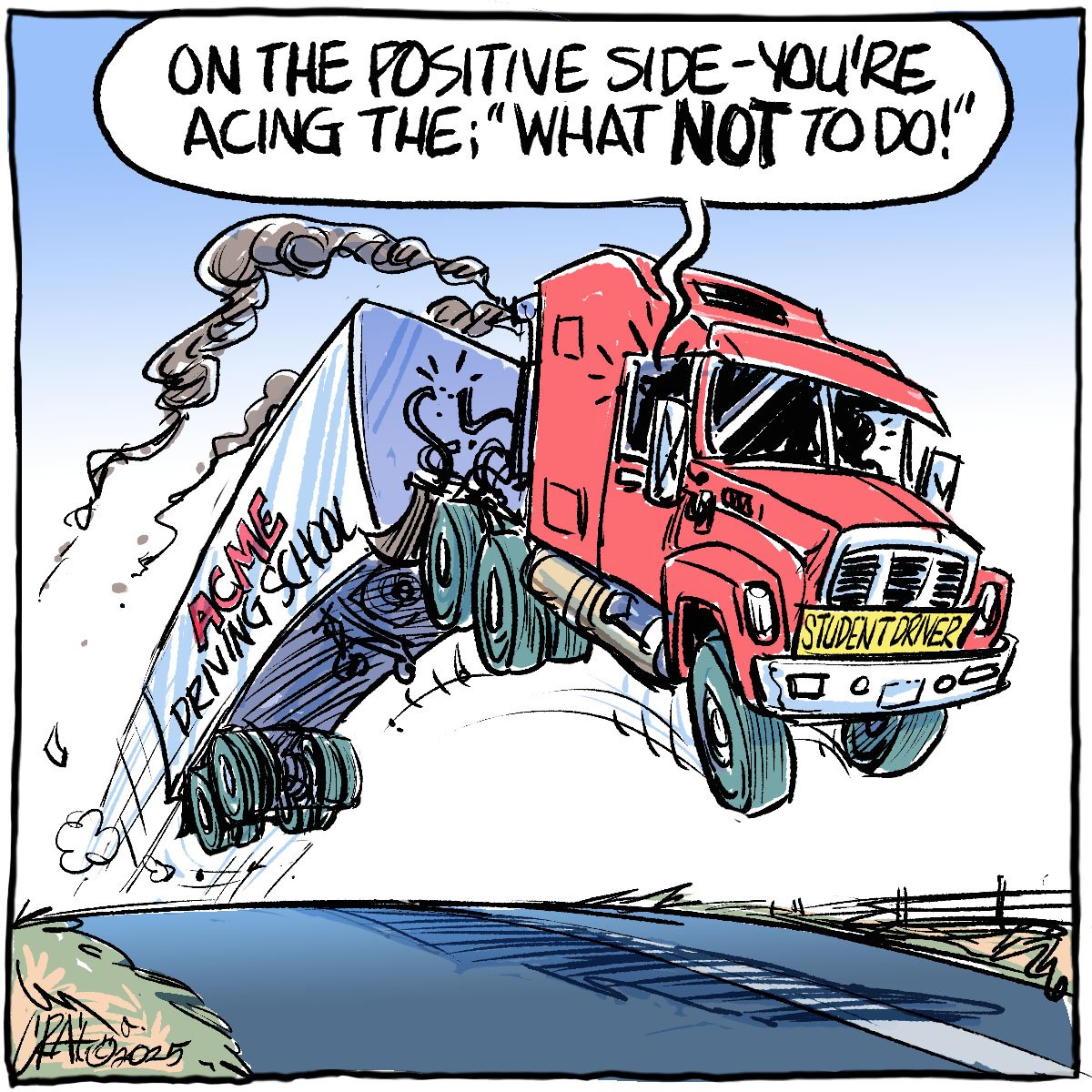Thursday was a ho-hum day in the equity markets: the Dow Jones Industrial Average up 3.14 percent and the S&P up not quite four percent.
Isn’t that weird? That stock market leaps of more than three percent seem like no big deal? Before last September, you’d only get a handful of days with that big of a move every decade, and each one earned itself front page news and was much talked about.
Now, however, after months of violent, wrenching behavior in the markets, Thursday just seemed like a relatively interesting day, but hardly a top news story. It’s a symptom of the unsettled and twitchy times we live in that the market will violently turn one way or the other depending on the mood of the day, on some trigger in the news that sets people off either to the positive or the negative.
Read Also

Efforts to improve trucking safety must be applauded
The tragedy of the Humboldt Broncos bus crash prompted calls for renewed efforts to improve safety in the trucking industry, including national mandatory standards.
The reason it can move either up or down so much is that the smart money people of the world can’t decide whether we’ve hit the bottom, if the recent surge in the equity markets is a new bull market, or if the recent weeks have been a powerful bear market typical of the type that haunt markets that are heading further down before long.
The bulls are willing to leap back in with both feet and any extra ones they can borrow any time they begin to suspect the bad times are ending, and the bears are delighted to go short everything again each time they think the bear market rally is over.
Most of the market gurus I follow are convinced this is a bear market rally, and a couple even predicted it to within a couple of days of it taking hold and reversing the previous powerful slump. But as I see on Bloomberg every day, there are lots of folks saying it’s time to get back into the cyclical stocks in order to take advantage of the full surge of what they see as the next long term bull market.
Last night, in the middle of the night, after being awoken by a baby that was hungry (or perhaps has my interest in market gurus and wanted me to realize this was on the TV), I was able to watch a half-hour interview of George Soros, a hero of mine, on Bloomberg TV. He’s an expert on market bubbles, on disjuctures and out-of-equilibrium situations in the markets (that have made him a billionaire), and on the resolution of economic problems. What’s his view on the present equity rally: it’s a bear market rally, so don’t count on it sticking around.
What does this mean for the grain markets? So far the equity rally has gently pulled along most of the crops – many would demand there’s cause and effect there but mainly coincidence – but there isn’t that same locked-at-the-hip phenomenon that we saw in the fall, when commodity prices fell with equities. Supply and demand still seems to count in the grains, hence the soaring of soybeans and canola and the doldrumming of feedgrains.
If the equity markets are in a bear market rally and soon slump, will that kill commodities and kill off the present spring rally? I get sick of saying this, but it depends. Lots of folks think all the (presumed) extra liquidity being pushed into the world’s financial markets by the myriad government bailouts around the world will spill over into hard assets, as soon as people believe currencies are about to devalue under all the weight of the new money and it’d be smarter to own precious metals, oil and used tires, which retain their values in an inflationary atmosphere. That, of course, also applies to ag commodities, which might soon seem like safer stores of value than U.S. dollars.
The other scenario is what happened to commodities in the early 1930s, in which they fell, fell, fell. Collapsing worldwide demand meant prices had nowhere to go but down. In this sort of a situation, the money supply drastically shrinks and inflation disappears and deflation takes hold. In the 1930s governments didn’t try to spend their way out of the economic bag the way they are now, so it’s a quite different situation, but the reason many don’t believe the world’s money supply is expanding because of all this government spending on “stimulus” and buying up crap assets is that all this money is being stuffed into mattresses by consumers (and therefore ceasing to exist as money) and eliminating debts that are soon going to go bad. Banks and consumers aren’t out there multiplying this money, so until they do, it’s hard to believe in a strongly inflationary environment.
But all we need is a couple of months of the belief in inflation and the better mood to hold and crop markets should continue to be peppier and offer farmers better prices with which to justify seeding this crop and give a chance to make some new crop sales a semi-profitable prices.















